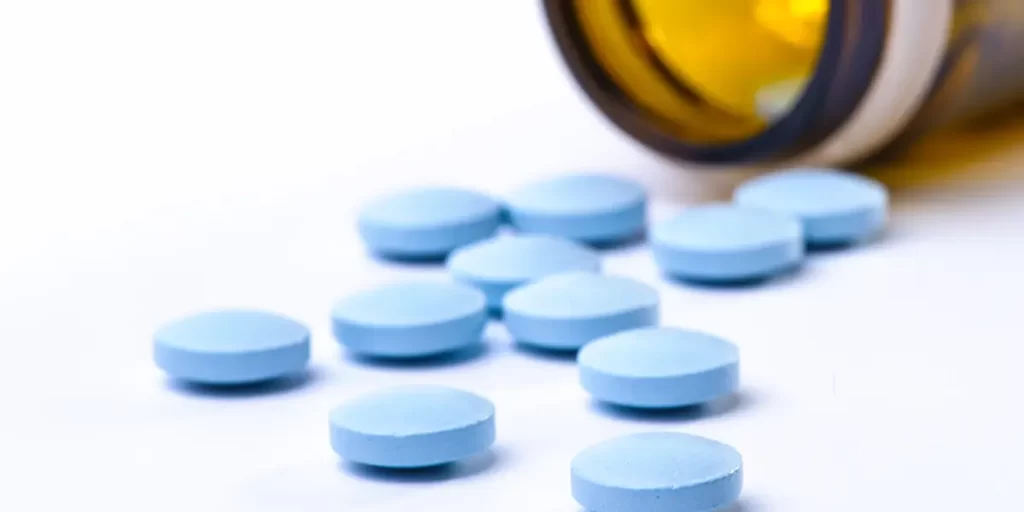How Long Does Valium (Diazepam) Stay in Your System?
Written by Jonathan Strum
& Medically Reviewed by Dr. Jessica Pyhtila, PharmD
Medically Reviewed
Up to Date
Last Updated - 6/17/2022
View our editorial policy
Diazepam (Valium) is a benzodiazepine medication prescribed to treat anxiety, sleep disorders, panic attacks and seizures. Valium works by suppressing brain activity, resulting in relaxation and drowsiness. Although the drug is a valuable treatment for several health conditions, it is a Schedule IV controlled substance, meaning it carries a risk of abuse, addiction and dependence.
Whether a person is using Valium illegally or with a prescription, it is important to understand how long Valium stays in the system and how certain factors can impact its clearance from the body.
How Does Valium Work?
As a benzodiazepine, or benzo, Valium works by enhancing the activity of gamma-aminobutyric acid (GABA) in the brain. GABA is the brain’s main inhibitory neurotransmitter, and it works to calm down brain activity. Valium’s impact on GABA is why the drug is commonly used to help quiet brain activity, and it’s why the drug is so effective in calming anxiety, panic and seizures.
How Is Valium Metabolized in the Body?
The liver metabolizes Valium using enzymes such as CYP3A4 and CYP2C19. Once broken down in the liver, Valium and its metabolites are mainly excreted from the body through the kidneys in urine. How fast Valium is removed depends on the dosage, as Valium can accumulate in the body.
How Long Does Valium Take To Kick In?
Valium can start working in as little as 15 minutes or as long as 2.5 hours. The drug starts working more quickly if you take it on an empty stomach. Conversely, it takes longer to start working if you take it with a high-fat meal.
How Long Does Valium Last?
How long the effects of Valium last depends on the dose, administration route, frequency of use and individual biological factors. When taken orally, more than 90% of Valium is absorbed. The average time to achieve peak concentrations within the body is 60 to 90 minutes, and effects can last for 12 to 24 hours. Using higher doses or injecting Valium can result in effects within just a few minutes, and they can last several days.
Valium Half-Life
A drug’s half-life indicates how long it takes for half of a drug dose to be removed from the body. The average diazepam half-life is approximately 48 hours, meaning that about 50% of the drug will be cleared from the body after that time.
Because it takes around five half-lives to totally remove a drug from your system, it may take up to 10 days to eliminate Valium from the body.
How Long Does Diazepam Stay in Your System?
Valium drug tests generally rely on the detection of diazepam or its breakdown products. How long Valium shows on drug tests depends on the dose, the length of use and the exact laboratory test utilized.
In rare situations, a false positive for Valium may occur during drug testing. False positives can occur when the antibodies used in testing bind to other drug components that are similar to diazepam or its metabolites. Certain medications can cause false-positive results in benzodiazepine tests, including tolmetin, naproxen, etodolac, fenoprofen, oxaprozin and sertraline. The possibility of false-positive results should be discussed with a medical professional.
How Long Does Valium Stay in Your Urine?
Urine tests can detect Valium for up to seven days after the last use.
How Long Does Valium Stay in Your Blood?
Valium can be detected in your blood for up to 37 hours after the last dose.
How Long Does Valium Stay in Your Saliva?
Valium saliva tests can detect the drug for up to two days after administration.
How Long Does Valium Stay in Your Hair?
A 1.5-inch hair sample can show any Valium that was taken within the previous 90 days.
Factors Affecting How Long Valium Stays in Your System
Many factors impact the clearance of Valium from the body, including:
- Amount used: The dose of Valium influences how long the drug can be measured in bodily fluids. Larger does require longer to break down and be excreted from the body.
- Frequency of use: When Valium is taken repeatedly over a prolonged time frame, it takes longer for the body to process and fully clear the drug.
- Method of use: How Valium is administered impacts how long the drug stays within the body. Oral Valium may take longer to metabolize compared to injected Valium, though this depends on the dosage.
- Age: Age-dependent biological factors impact the clearance of Valium from the body. Elderly patients and infants generally have a longer Valium half-life.
- Overall health: A person’s overall health can alter Valium uptake and clearance. For example, individuals with obesity or chronic diseases may take longer to break down and eliminate Valium.
- Liver function: The liver plays an essential role in processing and eliminating Valium from the body, so variations in liver function can affect how long Valium is detected in drug screening tests.
Valium Abuse and Addiction
As a Schedule IV controlled substance, Valium carries a risk of abuse, addiction and dependence. Overall, about 2.1% of American adults misuse benzos like Valium, and only 0.2% have a benzo use disorder. However, among people who are prescribed benzos, 17.1% misuse them and around 2% have a benzo use disorder.
Signs that a person may be developing a problem with Valium include:
- Taking more Valium or a higher Valium dose than intended
- Unsuccessful previous attempts to cut back on or quit Valium
- Spending a lot of time trying to obtain Valium or recover from use
- Craving Valium
- Problems fulfilling obligations at home, school or work due to Valium
- Social or interpersonal problems linked to Valium
- Giving up other activities because of Valium
- Using Valium even when it can be dangerous to do so, like before driving
- Continuing to take Valium even though you know it’s having a negative impact
- Needing increasing doses of Valium to get the same effects as before
- Having unpleasant withdrawal symptoms when you try to quit or cut back on Valium

Take The Next Step Toward Recovery
Valium Addiction Treatment
At The Recovery Village Ridgefield, we believe that anyone can recover from Valium as long as they get the right support. Nestled in the Cascade Mountains of the Pacific Northwest, our nationally accredited detox and rehab center can help you address your Valium use and begin a healthier, drug-free life in recovery.
Our medical detox facility provides around-the-clock care to help you ease yourself off Valium while avoiding withdrawal symptoms. Following detox, we offer a full array of rehab services that teach you the coping skills needed to avoid Valium use over the long term.
If you or someone you love struggles with Valium addiction, The Recovery Village Ridgefield can help. Contact us today to learn about our Valium treatment options and begin the initial steps toward addiction recovery.
Sources
- University of Rochester Medical Center. “Benzodiazepines (Urine).” Accessed March 31, 2022.
- PsychDB. “Sedative, Hypnotic, or Anxiolytic (Benzodiazepine) Use Disorder.” March 29, 2021. Accessed March 31, 2022.
- National Institute on Drug Abuse. “Research suggests benzodiazepine use is high while use disorder rates are low.” October 18, 2018. Accessed March 31, 2022.
- Hallare, Jericho; Gerriets, Valerie. “Half Life.” StatPearls, August 23, 2021. Accessed March 31, 2022.
- Gryczynski, Jan; Schwartz, Robert P.; Mitchell, Shannon D.; et al. “Hair Drug Testing Results and Self-reported Drug Use among Primary Care Patients with Moderate-risk Illicit Drug Use.” Drug and Alcohol Dependence, May 17, 2014. Accessed March 31, 2022.
- ARUP Laboratories. “Drug Plasma Half-Life and Urine Detection Window.” October 2021. Accessed March 31, 2022.
- Cansford Laboratories. “Oral Fluid (Saliva) Testing.” Accessed March 31, 2022.
- Drugs.com. “Valium.” October 22, 2021. Accessed March 31, 2022.
View Sources
- University of Rochester Medical Center. “Benzodiazepines (Urine).” Accessed March 31, 2022.
- PsychDB. “Sedative, Hypnotic, or Anxiolytic (Benzodiazepine) Use Disorder.” March 29, 2021. Accessed March 31, 2022.
- National Institute on Drug Abuse. “Research suggests benzodiazepine use is high while use disorder rates are low.” October 18, 2018. Accessed March 31, 2022.
- Hallare, Jericho; Gerriets, Valerie. “Half Life.” StatPearls, August 23, 2021. Accessed March 31, 2022.
- Gryczynski, Jan; Schwartz, Robert P.; Mitchell, Shannon D.; et al. “Hair Drug Testing Results and Self-reported Drug Use among Primary Care Patients with Moderate-risk Illicit Drug Use.” Drug and Alcohol Dependence, May 17, 2014. Accessed March 31, 2022.
- ARUP Laboratories. “Drug Plasma Half-Life and Urine Detection Window.” October 2021. Accessed March 31, 2022.
- Cansford Laboratories. “Oral Fluid (Saliva) Testing.” Accessed March 31, 2022.
- Drugs.com. “Valium.” October 22, 2021. Accessed March 31, 2022.
Authorship






